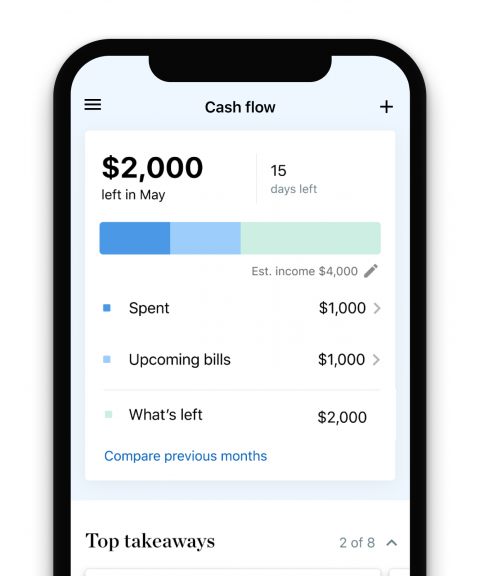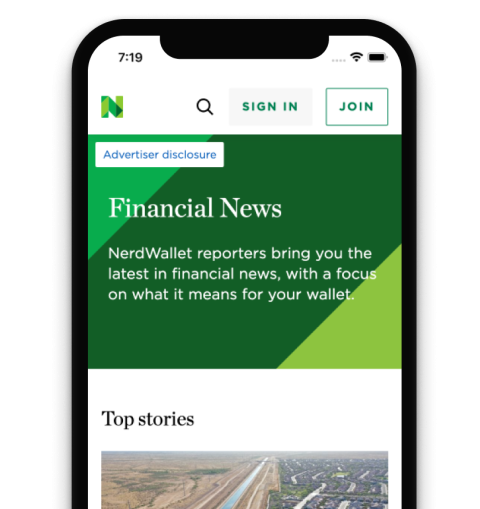Many or all of the products featured here are from our partners who compensate us. This influences which products we write about and where and how the product appears on a page. However, this does not influence our evaluations. Our opinions are our own. Here is a list of our partners and here's how we make money.
Welcome to NerdWallet’s Smart Money podcast, where we answer your real-world money questions.
In this episode, we walk you through how to cancel your federal student loans now that the application is live.
Check out this episode on any of these platforms:

Our take
You can apply now to cancel up to $20,000 in federal student loan debt. As the Biden administration promised, the application itself is short, simple and should only take a minute or two to fill out.
Once your application is submitted, your eligible student debt should be canceled within six weeks, according to the Education Department. Expect your servicer to notify you about the cancellation, and you can monitor your account through studentaid.gov.
Beware that scams are rampant right now. If you get any call about student debt cancellation, you can most likely count on it being a scam. Your student loan servicer and the Education Department will not call you about applying for debt cancellation.
More about student debt cancellation on NerdWallet:
Have a money question? Text or call us at 901-730-6373. Or you can email us at [email protected]. To hear previous episodes, go to the podcast homepage.

Episode transcript
Sean Pyles: After weeks of waiting, a handful of lawsuits and a decent amount of confusion, it's finally here — the application to cancel your federal student debt. Welcome to the NerdWallet Smart Money podcast. I'm Sean Pyles.
Anna Helhoski: And I'm Anna Helhoski. If you want the Nerds to answer your money question, call or text us on the Nerd hotline at 901-730-6373. That's 901-730-NERD. Or email us at [email protected].
Sean Pyles: This episode, we're going to help you cancel your student debt. The debt relief application just dropped, so we want to talk you through it in real time, as in I am going to go through the process on the podcast right now. Anna, who has written extensively about student debt and cancellation — she even did a podcast series about it that you should check out — is going to help provide some additional Nerdy info and context for you. So, let's just dive into it. Are you ready, Anna?
Anna Helhoski: I'm ready. The website you need to go to is studentaid.gov/debt-relief/application. Sean, do you have the application up?
Sean Pyles: I have the application up here. Anna, will you start the timer?
Anna Helhoski: Starting the timer in 3, 2, 1.
Sean Pyles: OK, great. It's asking for my first name, middle initial, last name. I feel like I'm racing myself here. My social security number, and again, my social to confirm. Date of birth, my phone number, my email address, and again, confirming my email address. Then beneath that, it says, "Review and submit the agreement." By signing this form, I agree to a handful of statements. One is that I'm requesting student loan debt relief up to $20,000, and if requested, I will provide proof of income, and that if I fail to do so by March 31st, 2024, or if my income does not qualify for federal student loan debt relief, the relief will not be processed. I am verifying that I am the individual stated, and then I also am affirming that one of the following statements that I will not read, because they are a little bit long and boring to read aloud, is true. Then I go down, put in my information again, my name, and I'm certifying that this information is correct, and I submit it. Except I typed in my social wrong the second time. So, let me correct that.
Anna Helhoski: Well, assuming that you had done that correctly, it was about a minute and 50 seconds, Sean. That's pretty incredible.
Sean Pyles: Sweet. Yeah. So I hit submit and it says, "Thank you. Your application for one-time federal student loan debt relief has been submitted. We'll send you an email to confirm we received your submission."
It has some information about next steps here, too. It says, "We will process the application." They'll contact me if they need more information. They'll keep me updated along the way, and then they give me a link to where I can get more information about student loan debt relief. Interestingly, below this bit of information, there is a big red box that says, "Beware of scams." So, let's actually talk about that first, because I want to go into some additional context around student loan debt relief, but scams are something that people should really be keeping in mind right now.
Anna Helhoski: Yes, absolutely. Scammers started mobilizing before Biden even announced relief, so they're really running amok right now, and you do not want to get scammed. Getting scammed leads to identity theft, money theft and a lot of phone calls and headaches that you just absolutely do not need in your life.
Sean Pyles: Yeah, they're rampant. I actually got a call from a random number shortly after the student debt cancellation was announced from someone who was purporting to be my loan servicer. They said they wanted my Federal Student Aid ID to "verify my eligibility," and that was for sure a scam. One thing that's interesting is that, as folks just listened to, the application doesn't even ask for your FSA ID, and additionally, my servicer, if you think about it, they have no incentive to help me cancel the debt that I could be paying them interest on. So, why would they call you to do that? The answer is, they wouldn't.
Anna Helhoski: So, it's all around pretty bad. Yeah.
Sean, as you mentioned, your servicer is never going to call you to say, "Hey, do you want debt relief?" It's never going to happen. The basics here are this. Any unsolicited call that you receive about cancellation is probably a scam. The Education Department or your servicer is not going to call you about this. Don't answer text messages or emails either, even if they claim to be your servicer or the Education Department. A lot of these scammers are pretty sophisticated in how they appear to you because they want you to trust them, but if you ever have a doubt about a call or a message that you receive, hang up and contact your servicer directly. More importantly, never give out your banking information, credit card information or any other financial information to anyone. You also don't want to hand over your FSA ID, account number or password to anybody either.
But unfortunately people do get scammed. They certainly are going to get scam calls, so there are a few things that you can do if you are in this position. The first one is sever all ties with the scammer. Don't answer calls. Hang up. All of the above. Contact your servicer to report any kind of an account breach. You may need to even request a new FSA ID. Then check the contact information in your account. Make sure all ongoing correspondence goes to you. A lot of times when scammers can get into your account, they'll switch your contact information so that they're the ones receiving any kind of correspondence. You should also contact your bank to stop any automatic payments to the scammer, freeze your credit, seek legal assistance if you need help recovering any money. Most importantly, report the scam to enforcement agencies. At a minimum, you should report it to the Federal Trade Commission and your state attorney general's office.
Sean Pyles: Got it. OK. Well, I also want to zoom out a little bit. Anna, can you please remind us of who is eligible for this debt cancellation, and how much they might have canceled?
Anna Helhoski: Absolutely. There's been a lot of confusion about who is and who isn't eligible for relief, so here's a refresher. Whether you get any cancellation is going to be dependent on your income, specifically your 2020 or 2021 income. It must be below $125,000 for an individual, or your joint income with your partner or your spouse must be below $250,000 for your household. There are two amounts of cancellation: $10,000 and $20,000. In order to get the higher amount of cancellation — $20,000 — you must have received a Pell Grant during college. If you're not sure if you received a Pell Grant, you can log into the National Student Loan Data System, or the Federal Aid website using your FSA ID, and it'll show your previous aid information on the financial aid review page.
There are a few other parameters about who gets relief and who doesn't. Your loans must have been dispersed by June 30th, 2022. They must be Direct Loans, Undergraduate Direct, Graduate Direct, Parent PLUS Loans, PLUS Graduate Loans, as well as government-owned Perkins Loans, or government-owned FFELP. That's Federal Family Education Loan Program Loans. There are two critical groups of borrowers who do not qualify for any sort of cancellation. The first of those are people who have private student loans obviously, but there's also FFELP loans that are owned commercially. Those aren't going to qualify unless a borrower consolidated into a Direct Loan prior to September 29th of this year, which unfortunately borrowers found out on September 29th of this year.
Sean Pyles: Oh, no. Right.
Anna Helhoski: It was pretty devastating, and this group of borrowers is often left out. They were left out of the student loan payment pause that originated at the start of the pandemic. So, it's been a pretty hard road for them.
Sean Pyles: It is also worth reiterating that private loans are not eligible for cancellation.
Anna Helhoski: Yes. If you have private debt, that is not going to be eligible for this particular relief.
Sean Pyles: Right. The application is not going to be open indefinitely. What's the deadline for this, Anna?
Anna Helhoski: So, it's open now through December 31st, 2023. That is, unless a federal judge rules on one of the lawsuits that have been filed to halt processing and delivery.
Sean Pyles: There have been some lawsuits, that you just referred to, challenging the cancellation order. What's going on there? What's the latest?
Anna Helhoski: Sure. So, there have been multiple challenges to Biden's executive order to cancel student debt. They've come out in recent weeks, and they range from state attorneys general's offices to law firms backing individuals and local associations. Most importantly, if any of them are deemed viable, it could delay or halt delivery of cancellation. Two of them have already been dismissed. There was a hearing about another one. We're just waiting on more news at this point.
Sean Pyles: Got it. Is there anything else that you think folks should keep in mind as they work to hopefully cancel some of their student debt?
Anna Helhoski: I think it's worth noting one thing that you mentioned when you were completing your own application. You don't have to provide proof of income right now, but you should be prepared to do so, just in case you're called upon to do so. That would happen sometime between now and March 31st, 2024. The proof of income is going to be your 2020 or 2021 income. Remember, you cannot lie. You must agree that you certify all the information that you submit is true under penalty of perjury. If and when you do submit proof of income, you'll need to have one of three very official IRS documents. So that's an IRS Form 1040 — that's your tax return from 2020 or 2021. Or an IRS tax return transcript from those years. Or if you didn't file taxes, an IRS Verification of Non-filing Letter from 2020 or 2021.
Sean Pyles: OK. Well, actually I do have one last question for you. So, I submitted my application. Do you have any idea of how long it will be until I receive my debt cancellation?
Anna Helhoski: The Education Department estimates it should take around six weeks. Keep an eye out for any communication about your relief being processed from the Education Department, and regularly check your loan balance through your student loan servicing account. Just a reminder, you should submit your application by mid-November if you want to ensure your relief is going to be processed by the time payments will restart in January. That is, of course, if everything goes according to plan. There's still a chance lawsuits could derail application processing, and there's always a possibility the pause could be extended further. It's happened many times before.
Sean Pyles: Yeah, we'll see. OK, cool.
Well, that is all we have for this episode. If you guys have any questions about canceling your student debt, or anything else related to money, turn to the Nerds, and call or text us your questions at 901-730-6373. That's 901-730-NERD. You can also email us at [email protected], and visit nerdwallet.com/podcast for more info on this episode. Remember to follow, rate and review us wherever you're getting this podcast.
Anna Helhoski: Here's our brief disclaimer, thoughtfully crafted by NerdWallet's legal team. Your questions are answered by knowledgeable and talented finance writers, but we are not financial or investment advisors. This Nerdy info is provided for general educational and entertainment purposes, and may not apply to your specific circumstances.
Sean Pyles: With that said, until next time, turn to the Nerds.


